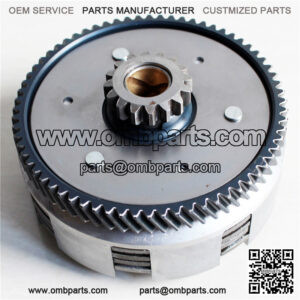A motorcycle’s clutch allows you to stop the engine from driving the transmission. This will stop the power from being transmitted to the transmission and rear wheel. This is very necessary since if you keep applying the power constantly, you would not be able to shift gear or stop your bike because the engine will keep forcing your bike to drive at an idle. In this case, shifting to neutral would be the only way to stop your motorcycle.
This is why the function performed by your clutch is critical. There are some people who would advise you to always shift to neutral and let out the clutch when coming to a stop. The truth is that it is not completely necessary as you will not cause excess wear to the clutch plates with the engines engaged.
So how exactly does a clutch work?
As a motorcycle rider, when you pull on the clutch lever, it engages the clutch. This means that the mechanism uses a rod to push a pressure plate, which has the purpose to apply and remove force from the rest of the components of the clutch. This will position the pressure plate to sit slightly above the friction discs and clutch plates. The subsequent decrease in pressure will allow the clutch plates to slip against the friction discs. The engine drive will also become disconnected from the transmission and we say that the bike is “freewheeling.”
When you release the clutch, the opposite happens. The rod pushing the pressure plate will retract to its original position, resulting in the clutch springs pressing the pressure plate onto the clutch pack. As the friction increases, the friction discs and the clutch plates will spin together, reconnecting the engine to the transmission.

